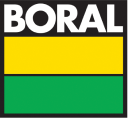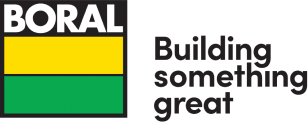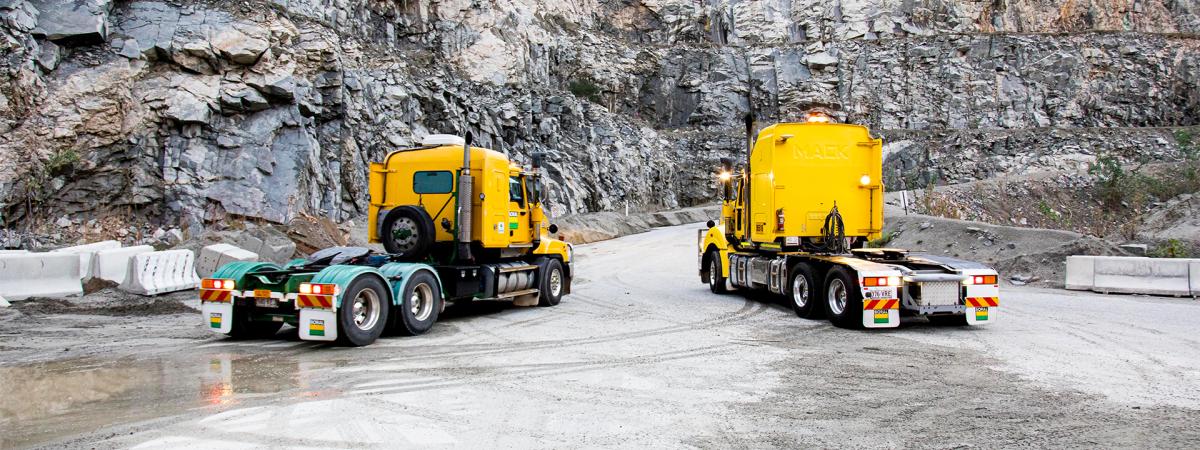The Narangba Quarry is located on Raynbird Road, Narangba, 37km north of Brisbane and northwest of the Narangba Township. Boral's landholdings cover an area of 469.8 hectares. Approximately 50ha are occupied by quarry operations and 420ha are buffer land. The Narangba Quarry is managed and operated by Boral since 1995, however the site has been operational since 1969. An existing town planning and environmental approval along with a Local Law Permit are in place for the operations.
The existing operation is contained within Lot 139 on SL10320 and Lot 1 on RP167435 with the other parcels owned by Boral acting as a buffer to the quarry's operation.
The site is identified as a Key Resource Area (KRA46) under the State Planning Policy for the Protection of Extractive Resources. Access for vehicles transporting materials to and from the quarry is via the haulage route of Raynbird Road, Oakey Flat Road and New Settlement Road to the Bruce Highway. Boral's Narangba Quarry is located within Key Resource Area - KRA46 as defined under the State Planning Policy.
Narangba quarry produces a range of sealing, asphalt and concrete aggregates as well as road base. The deposit is a resource of regional significance for the Brisbane region and as such is recognised as a Key Resource Area under the State Planning Policy 2/07: Protection of Extractive Resources. The site is designated as Regional Landscape and Rural Production Area in the South East Queensland Regional Plan 2005-2026.
The site secures a long term supply of quarry materials within the local communities in the Northern Brisbane region for the next 60+ years at the current rate of production.
A 500 metre wide separation distance has been adopted from the outermost boundary of the available resource, which is defined as the edge of land parcels currently zoned for extractive industry. Access for vehicles transporting materials to and from the quarry is via the haulage route of Raynbird Road, Oakey Flat Road, and New Settlement Road to the Bruce Highway.
Narangba quarry produces a range of sealing, asphalt and concrete aggregates as well as road base. There are four main rock types:
- Greenstone
- Blue Hornfels
- Phylite; and
- Granite.
The site is dominated by the NE-SW trending ridge of hornfelsed greenstone. The north-western corner of the Boral property is granite. The north-eastern corner is dominated by blue hornfels and phyllite. These rocks were originally a sequence of basalt, volcanic ash and mudstone, which were folded and faulted and subjected to regional metamorphism:
- Volcanic Ash - Phylite
- Mudstone - Shale
- Basalt - Greenstone.
A second phase of heating occurred with the intrusion of the Dayboro granite (tonalite). The molten granite melted the shale and greenstone it came into contact with. When these beds cooled they formed to:
- Shale-Blue Hornfels and/or
- Greenstone.
Narangba Quarry
Boral has been engaging with the Narangba local community since 2002.
Koala Fodder Plantation
Boral has established a Koala fodder plantation within the buffer land of the quarry, which supplies food to koalas at Australia Zoo, their wildlife hospital, and supports local koala carers (Koala Action Inc and the Moreton Bay Koala Rescue) who look after injured and orphaned koalas.
Our commitment and approach to sustainability is embedded in our business strategy and all that we do. We strive to deliver returns above our cost of capital through the cycle for our shareholders and to create value for all our stakeholders. We recognise that delivering sustainable outcomes is vital to our long-term success.
Narangba Quarry Sustainable Practices
Site water management is a key component of quarry operations. The site utilises on-site catchment dams to capture and treat water. Water is recycled for on-site uses such as dust suppression.
Boral has been engaging with the Narangba local community since 2002 and is offering support to the local Koala population via Koala fodder plantations within quarry buffer land, which supplies food to koalas at Australia Zoo, their wildlife hospital, and supports local koala carers (Koala Action Inc and the Moreton Bay Koala Rescue) who look after injured and orphaned koalas.
Boral signed a Cultural Heritage Agreement with the Gubbi Gubbi people for the Narangba Quarry on 5 October 2007. This agreement ensures that Boral will be able to discharge its ‘Duty of Care’ under the Aboriginal Cultural Heritage Act 2003. On-site training and cultural heritage inductions are undertaken as part of the agreement so that staff and contractors are aware of what to do in the event that an item of Aboriginal or Torres Strait Islander heritage is found. Boral appointed a staff member as the Cultural Heritage Coordinator (CHC) for the site who is in charge of the ongoing training and management of the site. The CHC is responsible for communicating any issues of cultural heritage to the appointed representative from the Gubbi Gubbi. Boral believe these Agreements are a significant commitment to an important issue in our community.
Road Transport Code of Conduct - in response to increased community concerns regarding truck driver behaviour at some of our sites, Boral responded with a state-wide initiative, the Extractive Industry – Road Transport Code of Conduct (RTCC). The Code of Conduct is supported by the Excecutive General Manager who commits and signs off on the Code for the busines. The Code spells out the expectations Boral has of their drivers carting to and from their quarries. The code was rolled out first in 2009 and was updated in 2011 throughout Queensland.
Boral's Narangba Quarry is operated under approvals from the Moreton Bay Regional Council (Council), Department of Environment and Science (DES) and Department of the Environment and Energy (DOEE). These approvals include:
- Town Planning Consent issued by Council
- Environmental Authority issued by DES
- EBPC Act Approval issued by DOEE (refer to link below for documentation associated with this Approval)
Download EPBC Annual Compliance Report 2023
Download Offset Management Plan - Narangba Quarry
Download EPBC Annual Compliance Report 2021
Download EPBC Annual Compliance Report 2022
A State Planning Policy (SPP) is a statutory planning instrument prepared under the Sustainable Planning Act (SPA). An SPP outlines the state's policy on matters of state interest in planning and development. It nominates the state's interests in planning and development and these are to be dealt with in planning instruments, council, development assessment processes and in designating land for community infrastructure.
At present, a single state planning policy is being developed to replace the multiple policies (http://www.dsdip.qld.gov.au/codes-policies-and-regulatory-provisions/state-planning-policies.html ) that are in existence.
The significance of the quarry site to the State has been established by its designation as a key Resource Area under the State Planning Policy 2/07 – Protection of Extractive Resources. Key Resource Areas (KRAs) are locations across Queensland that have been found to contain important extractive materials such as sand, gravel and rock. These materials are the major ingredients used for building our homes, hospitals, schools and factories, as well as the supporting infrastructure of roads, railways, ports, and water supply systems.
KRA encompasses:
- the extractive resource and on-site processing area;
- the associated transport route, usually a road haulage route;
- a separation area around the resource and processing area and the transport route.
KRAs will be protected from incompatible land uses through the development assessment by ensuring development in the KRA is compatible with the extraction, processing and transport of extractive materials to markets.


